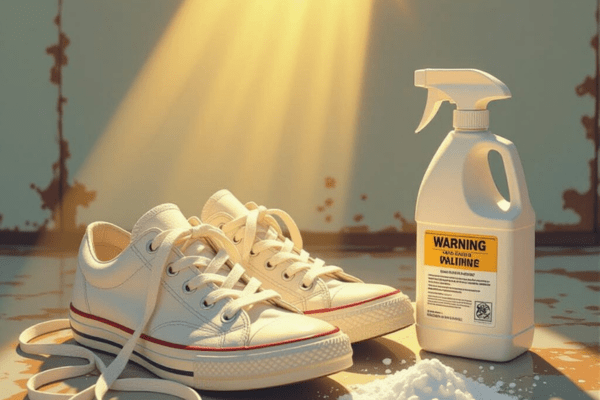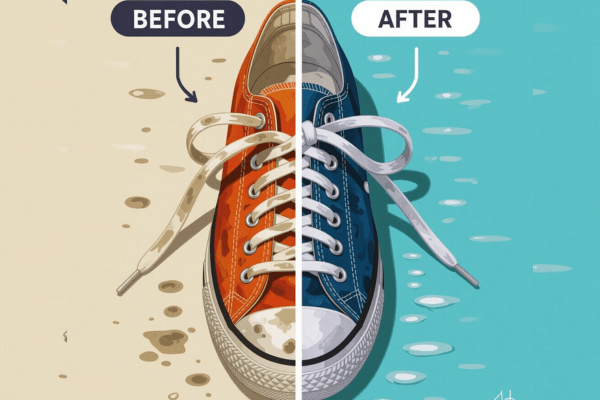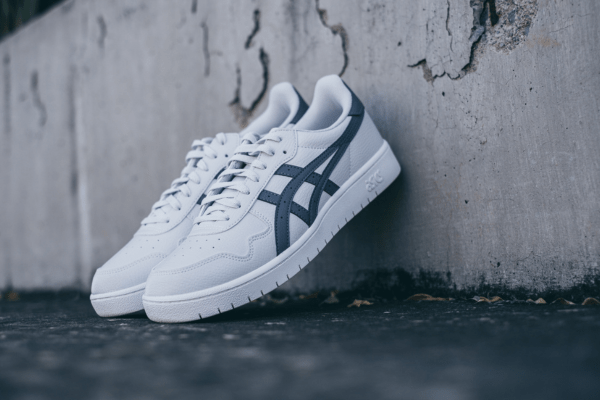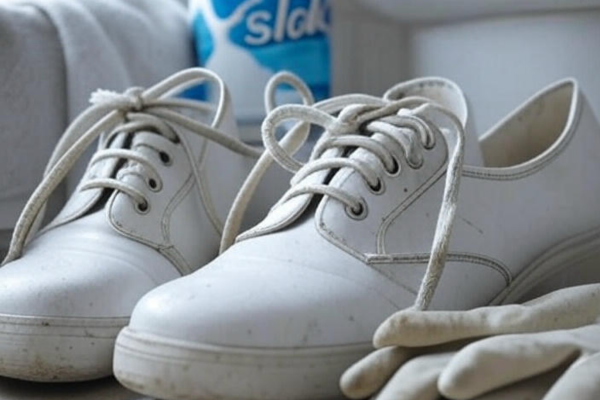Table of Contents
1. Introduction
- Hook: Yellow stains ruining your fresh kicks?
- Why shoelaces get yellow over time
- Introduce vinegar and baking soda as powerful natural cleaners
- Brief overview of what the post will cover
2. Why Do Shoelaces Turn Yellow?
If you’re trying to remove yellow stains from laces with vinegar and baking soda, it’s important to know why those stains appear in the first place. Yellowing is a common issue for sneaker lovers and anyone who wants to keep their shoes looking fresh. Below are the top reasons your shoelaces lose their brightness.
Sunlight Oxidation
Continuous exposure to direct sunlight causes a chemical reaction known as oxidation, which breaks down the fabric fibers. This leads to discoloration and a dull, yellowish tint. Even if your laces are clean, UV rays can cause long-term fading and yellow stains—especially on white or light-colored laces.
Sweat and Dirt Buildup
Shoelaces tend to pick up sweat, skin oils, and everyday dirt as you wear them regularly. When mixed with outdoor dust and indoor dirt, these organic compounds cause yellow or brown stains to develop. Laces used in running shoes or workout sneakers are especially prone to this kind of buildup.
Bleach Damage (Overuse)
Bleach is often used to whiten laces, but excessive use can backfire. When bleach reacts with iron or minerals in tap water, it can cause a yellowing effect rather than making laces white. Plus, harsh chemicals can damage the fabric structure over time.
Detergent Residue
If you don’t rinse your shoelaces properly, leftover soap can cling to the fabric, attracting dirt and leading to yellow stains when exposed to heat or air. This is common after machine washing or sun-drying laces with leftover detergent still in the fabric.
Quick Tip:
To prevent yellowing and maintain brightness, use gentle, natural methods. That’s why many prefer to remove yellow stains from laces with vinegar and baking soda—a safe, eco-friendly way to clean without damaging the material.

3. Are Vinegar and Baking Soda Safe for Cleaning Laces?
Yes—vinegar and baking soda are completely safe for cleaning shoelaces, especially when you’re dealing with yellow stains on white fabric. These two common household items offer a powerful, natural solution without the risks that come with harsh chemicals.
If you’re looking to remove yellow stains from laces with vinegar and baking soda, here’s why this method stands out:
Natural and Non-Toxic
Vinegar and baking soda offer a non-toxic alternative to harsh detergents and bleach. They don’t release harmful fumes, don’t damage skin on contact, and are perfectly safe to use around kids or pets. This makes them ideal for anyone seeking chemical-free cleaning methods or looking to clean yellow stains on shoelaces naturally.
Gentle on Fabrics
Bleach can weaken shoelace fibers and cause fraying or breakage over time. In contrast, vinegar breaks down stains, while baking soda gently lifts dirt and yellowing without harming the fabric. This method is especially useful if you want to whiten shoelaces with vinegar and baking soda while keeping them strong and durable.
Eco-Friendly Stain Removal
Vinegar and baking soda are both biodegradable and environmentally friendly. They help you avoid synthetic cleaners and promote environmentally friendly ways to care for your shoes. Whether you’re cleaning sneakers, boots, or casual shoes, this method aligns with sustainable living practices.
Better Than Harsh Chemical Alternatives
Traditional chemical stain removers may offer fast results, but they often contain bleach, ammonia, or synthetic fragrances that can irritate skin or cause damage to your laces. In contrast, using natural ingredients like vinegar and baking soda is not only safer but also more cost-effective and widely available.
For anyone serious about shoe hygiene tips and long-term maintenance, natural cleaning methods are the smarter choice.
Final Thought:
If you’re aiming to clean yellow stains on shoelaces naturally, nothing beats the simplicity and effectiveness of vinegar and baking soda. This trusted combo helps you whiten shoelaces with vinegar and baking soda gently and safely—no bleach, no harsh chemicals, just clean results.
4. What You’ll Need
Before you start cleaning your shoelaces, make sure you have the right tools and ingredients. These everyday household items are gentle on fabric, easy to use, and part of many trusted laundry hacks for sneakers.
This simple DIY method is not only safe but also one of the most trusted natural cleaning hacks for bright laces.
White Vinegar
A natural disinfectant and stain remover. It helps break down yellowing caused by sweat, dirt, and oxidation. White vinegar is the key ingredient in this yellow stain remover for laces.
Baking Soda
It acts as a mild scrub that removes deep-seated grime while eliminating unpleasant odors. When combined with vinegar, it forms a fizzing action that deep-cleans your laces without harsh chemicals.
Warm Water
Used to dilute vinegar and help dissolve stains. Warm water improves the cleaning process and softens dirt, making it easier to scrub away.
Small Bowl or Container
Use a bowl to soak your laces in the vinegar-water mix. This ensures even coverage and helps loosen stubborn stains during the soak.
Old Toothbrush or Soft Scrubber
Perfect for targeting yellow spots without damaging the fabric. A toothbrush allows for detailed scrubbing, especially around deeply stained areas.
Towel or Drying Rack
After cleaning, you’ll need a clean towel or drying rack to air-dry your laces naturally. Avoid machine drying, as heat can set stains or cause shrinkage.
Optional Items
- Lemon Juice: Boosts whitening power naturally and adds a fresh scent
- Mild Soap: For extra lather or to remove greasy buildup
Pro Tip:
These items are part of smart, natural routines many people use to maintain clean shoes and laces. Whether you’re refreshing old laces or adding them to your favorite natural cleaning hacks for bright laces, this method is safe and effective for regular use.
5. Step-by-Step Guide: Remove Yellow Stains from Laces
Want to get rid of yellow marks on laces without using bleach? This simple DIY method shows you exactly how to use a vinegar and baking soda lace cleaner to refresh your shoelaces and bring them back to life.
Follow these steps to safely and effectively restore white shoes and accessories:
Step 1: Remove Laces and Shake Off Loose Dirt
Take the laces out of your shoes and give them a good shake. This helps remove any dust, dirt, or debris stuck to the surface. For best results, you can also lightly brush off dry mud or soil before soaking.
Step 2: Soak Laces in Vinegar and Warm Water Solution
Combine one part white vinegar with two parts warm water in a small bowl.Submerge the laces completely and let them soak for 15–20 minutes. This helps loosen built-up grime and starts breaking down the yellow stains.
Step 3: Apply Baking Soda Paste Directly to Stains
In a separate bowl, mix baking soda with a few drops of water to make a thick paste. Take the soaked laces out and apply the paste directly on any yellow or dark spots.
Step 4: Gently Scrub with Toothbrush
Using an old toothbrush or soft bristle brush, gently scrub the stained areas. Gently rub the paste into the lace fibers using circular motions to clean without causing damage. Focus more on discolored or stubborn spots.
Step 5: Let It Sit for 15–30 Minutes
Leave the baking soda and vinegar mixture on the laces for 15 to 30 minutes. This rest time allows the natural ingredients to break down stains at a deeper level, enhancing the whitening effect.
Step 6: Rinse Thoroughly and Air Dry
Rinse your laces under clean, lukewarm water to wash away all residue. Ensure all traces of baking soda and vinegar are fully rinsed away.Gently squeeze out excess water and lay the laces flat on a towel or drying rack to air dry.
Avoid sun-drying, as heat can cause yellowing again.
Bonus Tip:
Use this same routine to clean sneakers and laces at home. It’s an easy, budget-friendly, and chemical-free solution that keeps your footwear looking fresh.
This method using a vinegar and baking soda lace cleaner is not only effective but also safe for most fabric types. It’s one of the best natural ways to remove yellow stains from laces and keep your shoes looking brand new.
6. Before and After: What Results to Expect
If you’re dealing with discoloration in laces, using natural ingredients like vinegar and baking soda can make a noticeable difference. While results may vary depending on how old or stubborn the stains are, most people see clear improvement after just one treatment.
Typical Improvements After One Cleaning
After using this method, expect the following changes:
- Yellow stains appear lighter or completely removed
- Laces look brighter and fresher overall.
- Lingering odors are neutralized.
- Fabric feels softer and more flexible
This is one of the easiest ways to restore white shoelaces with household items—no need for harsh bleach or expensive cleaners.
For Stubborn or Older Stains
If your laces haven’t been cleaned in a long time, or if the yellowing is deep-set, you may need to repeat the process for better results. Here are a few tips:
- Soak the laces for a longer period (up to 1 hour).
- Add a few drops of lemon juice for extra whitening.
- Gently scrub again after letting the paste sit.
- Avoid drying in direct sunlight, which can worsen discoloration.
These small adjustments help boost the effects of safe methods to clean dirty laces and can make even old shoelaces look nearly new again.
When to Repeat the Process
- For everyday dirt or mild yellowing: Once is often enough.
- For heavy staining: Repeat every 1–2 weeks until stains fade.
- For maintenance: Clean your laces monthly to prevent buildup.
If your laces are still too discolored after a few cleanings, it might be time to replace them—especially if the fibers are frayed or worn.
Final Note:
Natural cleaning takes a little patience, but it’s gentle and effective. When you’re dealing with discoloration in laces, simple methods like this help you restore white shoelaces with household items while protecting the fabric. It’s one of the safest ways to clean dirty laces without causing damage.

7. Extra Tips for Best Results
To get the most out of your natural cleaning routine, it’s important to follow a few expert tips. These small adjustments can make a big difference in how effectively you remove stains from white laces at home, especially when using safe, chemical-free ingredients.
Use Distilled White Vinegar Only
Always choose distilled white vinegar over other types like apple cider or balsamic. It’s clear, odor-neutral, and works best for breaking down yellow stains and dirt buildup. Using the wrong type of vinegar could leave behind unwanted color or residue.
Avoid Direct Sunlight While Drying
Letting your laces dry under harsh sunlight may seem like a good idea, but it can actually cause re-yellowing due to UV exposure. To preserve the fabric and keep laces looking bright, let them air-dry indoors or in a shaded area.
Combine with Mild Soap for Deeper Cleaning
For extra cleaning power, add a few drops of mild soap or gentle detergent to the vinegar and baking soda mixture. This helps remove oily stains, sweat buildup, and stubborn grime—especially useful after long wear.
Bonus Advice:
- Wash your laces separately from shoes to avoid over-soiling.
- Don’t wring the laces too hard; squeeze gently to maintain shape.
- Regularly cleaning your laces every couple of weeks helps stop yellow stains from coming back.
These simple steps enhance your results and make it easier to remove stains from white laces at home without damaging the fabric. It’s a gentle, eco-friendly way to keep your footwear looking new.
8. Common Mistakes to Avoid
When trying natural methods to clean white laces, a few simple mistakes can reduce the effectiveness of the process—or even damage your laces. To ensure the best results, here are some gentle shoe care tips and common errors you should avoid:
Using Colored Vinegar
Always use distilled white vinegar. Colored vinegars like apple cider or red wine vinegar may leave behind stains or discoloration. If you’re aiming for natural shoelace whitening, only white vinegar offers the clarity and acidity needed to safely break down stains without leaving new ones behind.
Using Hot Water (Can Set Stains)
It’s tempting to use hot water for cleaning, but it can actually set the stains deeper into the fabric—especially protein-based stains like sweat or body oils. Use warm or room-temperature water instead to loosen dirt gently without locking in discoloration.
Skipping the Rinse Step
After scrubbing and soaking, rinsing is crucial. Leaving vinegar or baking soda residue on your laces can cause them to stiffen, attract dirt, or fade unevenly. Rinse thoroughly with clean water to wash away all cleaning agents before drying.
Scrubbing Too Harshly on Delicate Laces
Using too much force while scrubbing can fray or damage the fibers, especially on thinner or older laces. Instead, use a soft toothbrush and light pressure. This approach preserves the fabric while still lifting stains effectively.
Quick Reminder:
These eco-friendly lace cleaning mistakes are easy to avoid with a little care. Stick to natural products, use proper technique, and stay consistent with your cleaning routine to keep your shoelaces fresh and white.
9. Alternative Natural Cleaning Options
If vinegar and baking soda aren’t available—or you simply want to try something different—there are several other natural cleaning options for dirty laces. These methods are effective, safe on fabric, and easy to do at home with common household items.
Whether you’re looking for chemical-free shoelace cleaners or just exploring new eco-friendly cleaning tips, these alternatives deliver great results.
Hydrogen Peroxide + Baking Soda
This combo is a powerful whitening solution, especially for deep yellow stains. Combine one tablespoon of hydrogen peroxide with an equal amount of baking soda to create a thick cleaning paste. Apply directly to stains, let it sit for 30 minutes, then scrub gently and rinse.
Lemon Juice Soak
Lemon juice contains natural acids that help brighten dull places and remove discoloration. Soak your laces in warm water mixed with freshly squeezed lemon juice for 30–60 minutes, then rinse and air dry in the shade.
Toothpaste Spot Treatment
Surprisingly effective, white non-gel toothpaste can lift surface stains and refresh shoelace color. Dip a toothbrush into the paste, gently scrub the stained spots, and rinse well to remove all residue. Avoid colored or gel toothpaste to prevent new stains.
Dish Soap and Warm Water Method
Ideal for general dirt and oil stains, dish soap is a great gentle degreaser. Mix a few drops of dish soap in warm water, soak the laces, and lightly scrub them. Thoroughly rinse the laces and allow them to air-dry to bring back their fresh, clean look.
Final Note:
Each of these methods offers a safe and natural way to clean shoelaces without harsh chemicals or bleach. Try one that fits the supplies you have at home, and always rinse well after cleaning to protect the fabric.
For best results, choose a method based on the type of stain and how delicate your laces are.
10. Conclusion
If your shoelaces have lost their bright look, don’t worry—there’s a simple, affordable solution right at home. The method to remove yellow stains from laces with vinegar and baking soda is proven, gentle, and eco-friendly. It works without bleach or harsh chemicals, making it safe for most fabrics. eco-friendly. It works without bleach or harsh chemicals, making it safe for most fabrics.
By soaking laces in vinegar and warm water, applying baking soda paste, and scrubbing gently, you can restore the clean white look of your laces with ease. This technique fits perfectly into natural cleaning routines and offers a reliable way to clean dirty laces at home.
11. FAQs
1. Is apple cider vinegar a good alternative to white vinegar for cleaning shoelaces?
It’s not recommended. White vinegar is best for cleaning because it’s clear and doesn’t leave stains or residue. Apple cider vinegar may tint white laces and reduce the whitening effect. For best results, stick to white distilled vinegar when you want to remove yellow stains from laces with vinegar and baking soda.
2. How long should I soak the laces?
Let your laces soak in the warm water and vinegar mix for around 30 minutes to help break down tough stains and embedded grime. After soaking, apply the baking soda paste for targeted stain removal and deep cleaning.
3. Will this method work on colored laces?
This method is mainly recommended for white or light-colored laces. Vinegar and baking soda are gentle, but there’s still a slight chance of fading on colored laces. Always test a small section first if you’re unsure.
4. Can I do this in the washing machine?
You can machine-wash your laces, but the baking soda and vinegar method works better as a pre-treatment for yellow stains. Machine washing is great for regular cleaning, but it won’t always remove yellow discoloration effectively. For stubborn stains, the DIY soak and scrub approach is more reliable.


